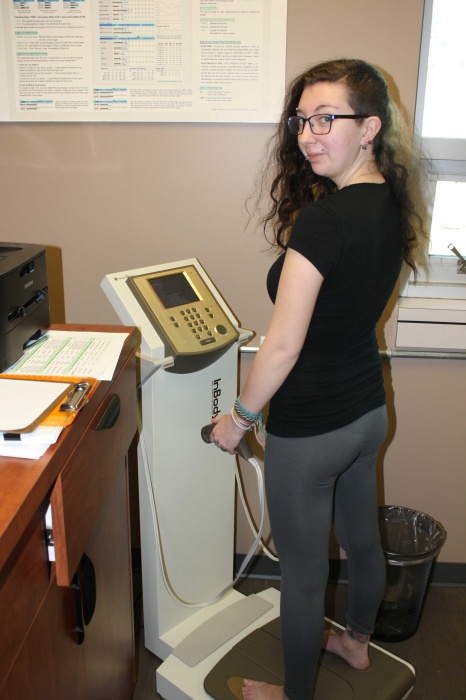If it seems like students are looking a bit healthier at the Lansdowne campus, it’s because Camosun’s Athletic and Exercise Therapy Clinic is now open.
The clinic opened in January in room 201 in the Wilna Thomas Building and is an extension of the athletic and exercise therapy program. All the care and treatment provided is done by students of the program, supervised by those with more experience.

The clinic provides prevention and care of musculoskeletal issues as a result of physical injuries, as well as other health issues related to physical activity… or lack thereof.
Peter Rehor, dean of Camosun’s Centre for Sport Exercise Education and creator of the therapy clinic, says that one of the clinic’s many purposes is to introduce and make the community aware of the opportunities available at Camosun, as well as promote physical activity and wellness. It also provides services not available anywhere else in BC. The work done in the clinic is both hands on and technology based.
“We provide cutting-edge assessment,” he says, adding that he brought some of the clinic’s technology over from the USA.
The clinic (which is open to everyone; go to camosun.ca/aetclinic for more info) is perfect for people who have health issues that aren’t severe enough to get attention from doctors.
Another purpose of the clinic is to provide freedom and independence for seniors by providing them with the tools necessary for living a healthy lifestyle. They also help people with chronic diseases and health issues such as high cholesterol, diabetes, and obesity, as well as general injuries resulting from physical activity.
“We have it all,” says Rehor.
A large percentage of the people who come into the clinic are looking for short-term treatment. However, they also do long-term work with people, in programs ranging anywhere from one month to six months.
“95 percent of people come in for one thing, and come back for treatment,” says Rehor.
One of the things that makes the clinic unique is that it is based on behavioural psychology. All programs and treatments are individualized and comprehensive based on each client’s personality and needs. Rehor says that he can take a blood test and have results almost instantaneously, with just a finger prick. The reason for this is that they do all their tests on site.
“Another one of the benefits is that all the tests are non-invasive and the results are immediate,” he says, emphasizing the speed with which the clinic works. “We can put in an order for orthopaedic shoes, send it to Virginia and get the shoes back at 10am the next day.”
All of this sounds great, but without some first-hand experience it doesn’t mean much. So I went to the clinic to see what it all means.
I did the body composition test, and all I had to do was stand on a machine: easy enough. I found out how much of my body weight was fat, lean muscle, and water, and whether I was in the normal range for people of my age and height and whether or not each side of my body was balanced in strength and weight. And it was all in a matter of minutes; not bad.
So what did I find out? My body weight was a little on the low side of normal; my body fat and lean muscle were also within normal range, although I could do with gaining some more muscle and losing a bit of fat.
(Looks like it’s time for me to start hitting the gym!)
What’s next for the clinic? Rehor wants to get students more involved, and students working with students is one of the ways he is hoping to do that. “My dream,” he says, “is for the students to call it their clinic.”
